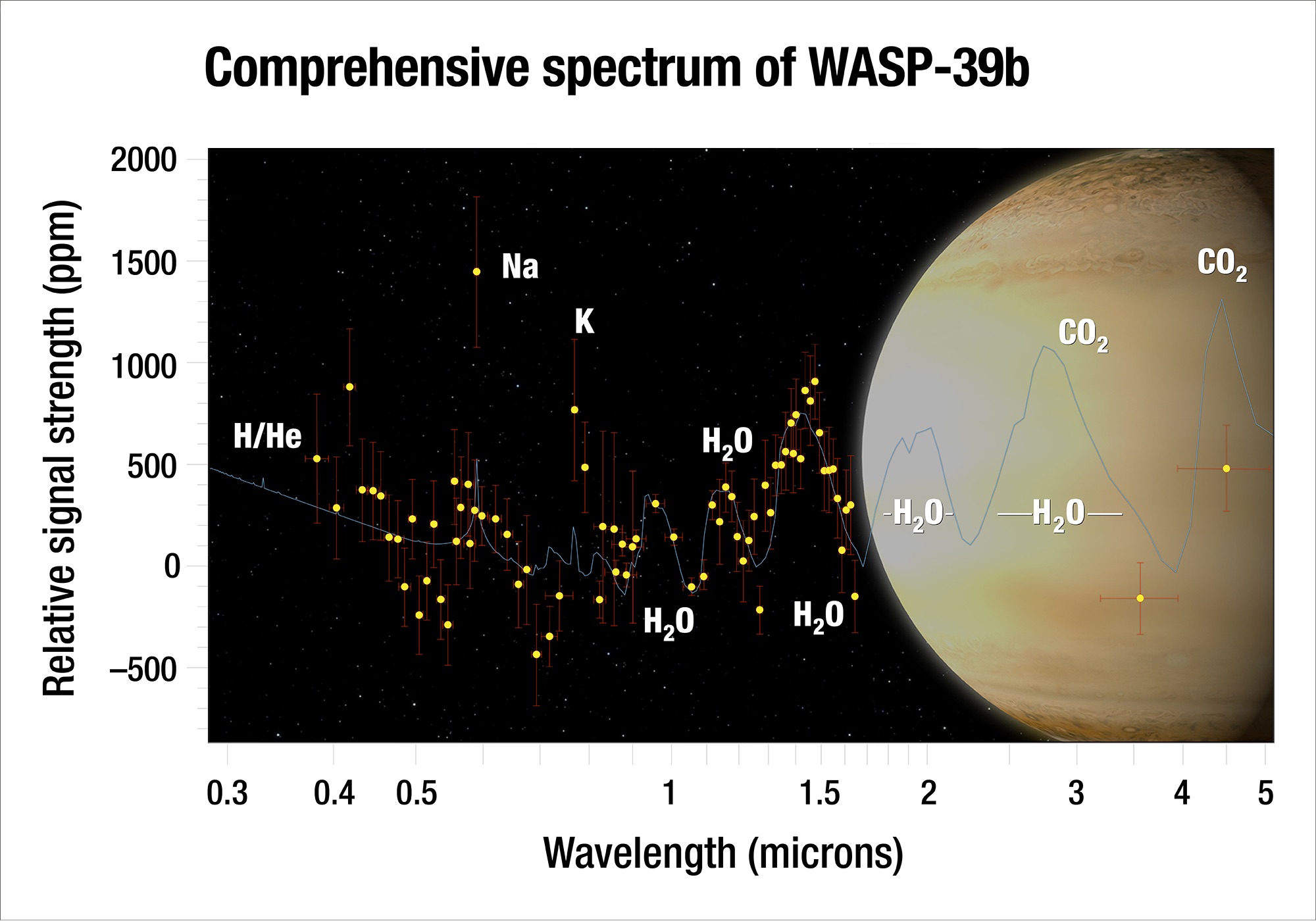Scorching Saturn-Size World Has 3 Times the Water of Ringed Planet

A Saturn-size gas giant exoplanet orbiting close to its star has three times as much water in its atmosphere as Saturn itself, researchers have found. The surprising find will improve our understanding of where planets form around a star, NASA officials said in a statement.
No one expected to see so much water on the planet, called WASP-39b, because it is a "hot Saturn" — a Saturn-size planet that is extremely close to its parent star. WASP-39b is roasting away at 0.05 Earth-sun distances (astronomical units) from its sun-like star. That's about eight times closer than Mercury is to our own sun in the solar system, or 20 times closer than the Earth is to the sun.
WASP-39b is so close to its star that the planet is tidally locked, meaning that one side of the planet is always facing the star. That daytime side is a blazing 1,430 degrees Fahrenheit (777 degrees Celsius), NASA officials said. However, winds transport much of that heat to the nightside of the planet, meaning that WASP-39b is almost as hot on the nightside as it is on the dayside. (Despite its "hot Saturn" moniker WASP-39b does not have rings like Saturn does. [The Most Intriguing Alien Planet Discoveries of 2017]
Despite these challenging conditions, water does persist on the planet, according to new data from the Hubble and Spitzer space telescopes. The water in WASP-39b's atmosphere suggests that the planet must have formed farther away from its parent star that it currently is located, where a greater amount of icy material was available. It has "an interesting evolutionary history," NASA officials said — as it moved closer to its star, it could have disturbed (or even destroyed) other planetary objects.
"We need to look outward so we can understand our own solar system," Hannah Wakeford, lead author on the new work, said in the statement. "But exoplanets are showing us that planet formation is more complicated and more confusing than we thought it was. And that's fantastic." Wakeford has joint appointments as a fellow with the Space Telescope Science Institute in Baltimore and as an astrophysicist with the University of Exeter in Devon, United Kingdom.
Wakeford's team used the two space telescopes to gaze at WASP-39b, which is about 700 light-years away from Earth. They discovered the water by looking at the starlight filtering through the planet's atmosphere and identifying water vapor's signature spectrum.
"WASP-39b shows [that] exoplanets can have much different compositions than those of our solar system," David Sing, co-author on the new work and an associate professor in astrophysics at the University of Exeter, said in the statement. "Hopefully, this diversity we see in exoplanets will give us clues in figuring out all the different ways a planet can form and evolve."
Breaking space news, the latest updates on rocket launches, skywatching events and more!
The scientists hope to use the James Webb Space Telescope, which is slated to launch in 2019, to get more data about carbon in the planet's atmosphere. (Hubble cannot spot the carbon, because that element absorbs light at longer, infrared wavelengths, beyond Hubble's capabilities.) When scientists know the amount of carbon and oxygen in the planet's atmosphere, this will yield more information about WASP-39b's origins, the scientists said.
The new work was detailed in The Astronomical Journal.
Follow us @Spacedotcom, Facebook and Google+. Original article on Space.com.

Elizabeth Howell (she/her), Ph.D., was a staff writer in the spaceflight channel between 2022 and 2024 specializing in Canadian space news. She was contributing writer for Space.com for 10 years from 2012 to 2024. Elizabeth's reporting includes multiple exclusives with the White House, leading world coverage about a lost-and-found space tomato on the International Space Station, witnessing five human spaceflight launches on two continents, flying parabolic, working inside a spacesuit, and participating in a simulated Mars mission. Her latest book, "Why Am I Taller?" (ECW Press, 2022) is co-written with astronaut Dave Williams.

